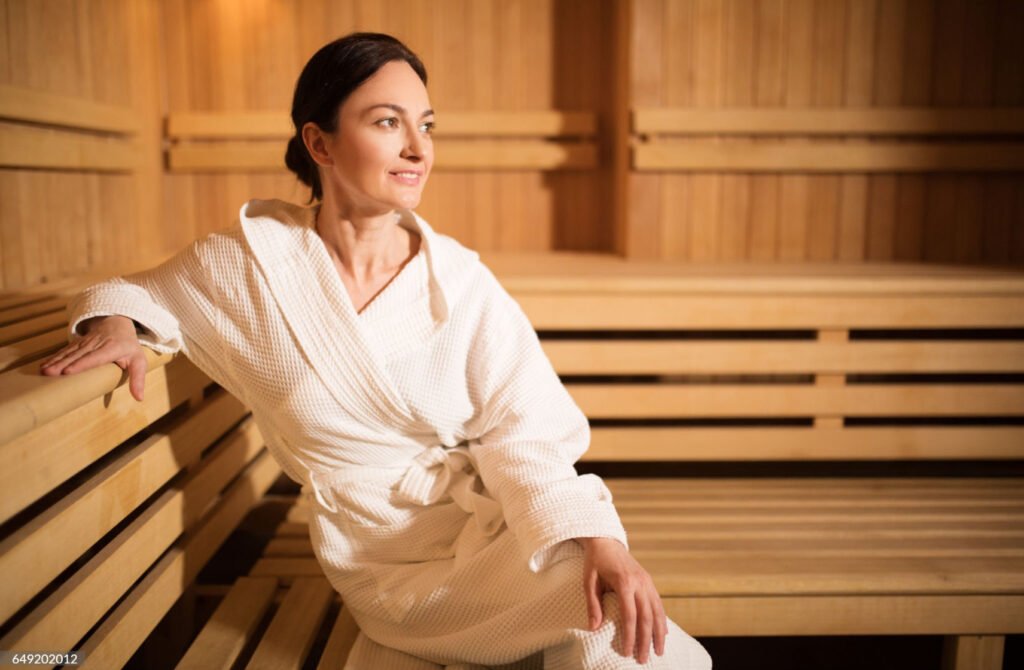How to Build an Eco-friendly Sauna with Sustainable Materials
Lucie
December 9, 2024

In recent years, there has been a rising trend toward eco-friendly living, extending to all aspects of our lives, including wellness practices such as sauna use. Eco-friendly saunas are carefully designed with sustainable materials and green building practices that minimize environmental impact while promoting health and well-being. This commitment to sustainability in sauna construction benefits not only the planet but also individuals seeking a therapeutic and rejuvenating experience. In this article, we will explore the key elements of eco-friendly saunas, sustainable sauna materials, and design tips to help you create a wellness retreat that supports both your health and the environment.
Why Choose an Eco-Friendly Sauna?
Eco-friendly saunas are designed with a focus on sustainability, aiming to reduce environmental impact while providing a natural wellness experience. Traditional saunas often use non-sustainable resources and materials that are harmful to the ecosystem. In contrast, sustainable saunas employ renewable resources, energy-efficient heating systems, and low-VOC finishes that help preserve natural habitats. For those who prioritize wellness and environmental health, an eco-friendly sauna offers a meaningful experience, ensuring you contribute to preserving the environment while enjoying your sauna sessions.
By choosing an eco-friendly sauna, you can reduce your carbon footprint, promote healthier indoor air quality, and ensure that your wellness routine aligns with green building practices. This holistic approach to sauna design not only provides a relaxing and restorative experience but also fosters a greater connection with nature, enhancing both physical and mental well-being.
Choosing Sustainable Sauna Materials
When building an eco-friendly sauna, selecting sustainable materials is essential. The materials used in sauna construction directly affect both its environmental impact and its effectiveness as a wellness tool. Let’s explore some of the best sustainable sauna materials.
Cedar Wood: is one of the most popular and sustainable sauna materials. Known for its natural resistance to moisture, decay, and pests, cedar makes an excellent choice for sauna construction. Its thermal properties allow it to retain heat effectively, creating a warm and inviting atmosphere while reducing energy consumption. Cedar is also a renewable resource, which makes it an eco-friendly option for building your sauna.
Fir Wood:Another great option for sustainable sauna building is fir wood. Fir is known for its durability and strength, and it’s an affordable, renewable material. It has a lower carbon footprint compared to traditional hardwoods, making it a great option for eco-conscious builders. Using fir for your sauna not only helps to protect the environment but also provides excellent thermal regulation.
Recycled or Reclaimed Wood:For those looking to reduce waste and make use of existing materials, recycled or reclaimed wood is an excellent choice. This type of wood can add character and history to your sauna while lowering the demand for new timber. It’s a great way to incorporate sustainability into your design without compromising on quality or style.

Sustainable Sauna Design Tips for Energy Efficiency and Wellness
Designing your eco-friendly sauna involves more than just selecting the right materials. To ensure optimal energy efficiency and a comfortable, healthy atmosphere, it’s essential to focus on the following design elements.
Space Optimization:A compact and efficient design will help reduce the energy required to heat your sauna, promoting sustainability. By creating a sauna layout that maximizes space without compromising comfort, you can keep your energy consumption low while still providing an effective wellness experience. Smaller saunas require less heat and are easier to maintain, making them more sustainable in the long run.
Natural Ventilation:Good ventilation is critical for ensuring a healthy and comfortable sauna experience. Proper ventilation allows for improved air quality and helps regulate humidity levels. Incorporating windows or vents into the sauna’s design allows for natural airflow, creating a fresh and invigorating environment. A combination of passive ventilation (such as small windows) and active ventilation (such as exhaust fans) can keep the air fresh and healthy inside.
Maximize Natural Light:Natural light has both aesthetic and energy-efficient benefits. By incorporating windows or skylights into your sauna design, you can reduce reliance on artificial lighting and enhance the atmosphere of the sauna. Natural light also helps regulate circadian rhythms, promoting better sleep and mental well-being. Consider using reflective materials or placing your sauna in a location with ample sunlight to make the most of natural light.
Efficient Heating Systems:The choice of heating system plays a significant role in the energy efficiency of your eco-friendly sauna. Opt for energy-efficient infrared heaters, which heat the body directly and require less energy than traditional saunas. Alternatively, a wood-burning stove that uses sustainably sourced firewood can be an excellent option for those who prefer a traditional sauna experience. For both options, be sure to choose heaters with high energy ratings to minimize energy consumption.
Sustainable Seating and Layout:The layout of your sauna is another key factor in ensuring energy efficiency and comfort. Tiered seating allows for better heat circulation, ensuring that all users benefit from the sauna’s warmth. Additionally, placing seating strategically can improve airflow and create a more comfortable experience for everyone inside. Adding indoor plants to your sauna can enhance the air quality and contribute to the overall wellness environment.
Building and Maintaining Your Eco-Friendly Sauna
When constructing an eco-friendly sauna, it’s important to approach every step with sustainability in mind. Here’s how you can ensure that your sauna remains both eco-friendly and functional for years to come.
Foundation and Location:Select a location that is easily accessible and doesn’t disrupt the natural landscape. A concrete slab or raised platform will provide a sturdy foundation while minimizing moisture exposure to the wooden elements. Be sure to check local building codes and zoning regulations before starting the construction process.
Energy-Efficient Insulation and Heating:Use energy-efficient insulation to keep your sauna well-regulated in terms of heat retention. This reduces the need for excessive heating and makes the sauna more energy-efficient. Additionally, choose an energy-efficient heating system that aligns with sustainable practices.
Ongoing Maintenance:To keep your eco-friendly sauna in optimal condition, regular maintenance is crucial. Ensure that the wood remains dry and free from mold by checking for moisture buildup regularly. Clean the surfaces with natural cleaning agents that are safe for both the environment and the user. By adopting a regular maintenance schedule, you can extend the lifespan of your sauna and maintain its eco-friendly benefits.
Long-Term Sustainability:Consider the long-term sustainability of your sauna by ensuring it is built to last. Using durable materials, high-quality finishes, and energy-efficient systems can help your sauna remain an eco-friendly retreat for many years. Regular care and attention to detail will help ensure that your sauna continues to support wellness while minimizing its impact on the environment.

Conclusion
Building an eco-friendly sauna not only enhances your wellness experience but also supports a sustainable future. By selecting sustainable sauna materials, incorporating green building practices, and focusing on energy-efficient design, you can create a sauna that aligns with both your health goals and environmental values. Whether you’re constructing a new sauna or renovating an existing one, these sustainable practices will help you create an eco-friendly wellness retreat that supports a healthy lifestyle and a cleaner planet.
By prioritizing eco-friendly sauna designs and materials, you can contribute to the growing trend of sustainable living while enjoying the numerous health benefits that saunas offer. Make the choice today to build a sustainable sauna that will provide years of relaxation and wellness for you and the environment.



